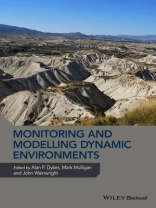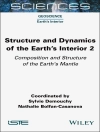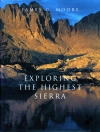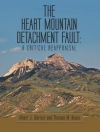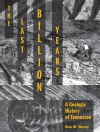The Times (Obituaries, 4 August 2008) reported that 'John Thornes was one of the most eminent and influential physical geographers of his generation.’ John’s keen interest in understanding landform processes and evolution was furthered through a variety of methods and informed across a range of disciplinary boundaries. In particular he pushed for better integration of monitoring, theoretical and simulation modelling, field and laboratory experimentation and remote sensing techniques. Although dominated by an interest in the Mediterranean region and problems of land degradation, his research activities ranged across a number of time scales and with other environmental perspectives.
This collection of papers reflects this wide range of John’s interests through the recent work of scientists and professionals most strongly influenced by his rigorous training or leadership. The thematic focus of the book, which runs through all of the main contributions, is the integration of different methodologies and the application of this approach to improved understanding of natural systems and the development of appropriate strategies for environmental and resource management. Short overviews of John’s contributions to geomorphological research are also presented to provide context for the origins of this book.
Spis treści
List of contributors, ix
About the editors, xi
Acknowledgements, xiii
1 Introduction – Understanding and managing landscape change through multiple lenses: The case for integrative research in an era of global change, 1
Alan P. Dykes, Mark Mulligan and John Wainwright
PART A
2 Assessment of soil erosion through different experimental methods in the Region of Murcia (South?]East Spain), 11
Asunción Romero Díaz and José Damián Ruíz Sinoga
3 Shrubland as a soil and water conservation agent in Mediterranean?]type ecosystems: The Sierra de Enguera study site contribution, 45
Artemi Cerdà, Antonio Giménez?]Morera, Antonio Jordan, Paulo Pereira, Agata Novara, Saskia Keesstra, Jorge Mataix?]Solera and José Damián Ruiz Sinoga
4 Morphological and vegetation variations in response to flow events in rambla channels of SE Spain, 61
Janet Hooke and Jenny Mant
5 Stability and instability in Mediterranean landscapes: A geoarchaeological perspective, 99
John Wainwright
6 Desertification indicator system for Mediterranean Europe: Science, stakeholders and public dissemination of research results, 121
Jane Brandt and Nichola Geeson
7 Geobrowser?]based simulation models for land degradation policy support, 139
Mark Mulligan
8 Application of strategic environmental assessment to the Rift Valley Lakes Basin master plan, 155
Carolyn F. Francis and Andrew T. Lowe
9 Modelling hydrological processes in long?]term water supply planning: Current methods and future needs, 179
Glenn Watts
10 Changing discharge contributions to the Río Grande de Tárcoles, 203
Matthew Marsik, Peter Waylen and Marvin Quesada
11 Insights on channel networks delineated from digital elevation models: The adaptive model, 225
Ashraf Afana and Gabriel del Barrio
12 From digital elevation models to 3?]D deformation fields: A semi?]automated analysis of uplifted coastal terraces on the Kamena Vourla fault, central Greece, 247
Thomas J.B. Dewez and Iain S. Stewart
13 Environmental change and landslide hazards in Mexico, 267
Alan P. Dykes and Irasema Alcántara?]Ayala
PART B
14 John Thornes and palaeohydrology, 299
Ken Gregory and Leszek Starkel
15 John Thornes: Landscape sensitivity and landform evolution, 307
Tim Burt
16 John Thornes and desertification research in Europe, 317
Mike Kirkby, Louise J. Bracken and Jane Brandt
17 John Thornes: An appreciation, 327
Denys Brunsden
Index, 331
O autorze
Alan Dykes undertook a Ph D on tropical rainforest landforms in Brunei, supervised by Professor John Thornes, then took up his first academic post lecturing in geomorphology at Huddersfield University. Now a Senior Lecturer in Civil Engineering at Kingston University, he continues his research into all aspects of landslide science from geotechnical controls to landform evolution and specialising in peatland instability.
John Wainwright has researched questions of soil erosion, ecogeomorphology, land degradation and landform evolution across a range of space and time scales, originally inspired by the supervision of Professor John Thornes in his Ph D on the erosion of prehistoric archaeological sites. He has subsequently lectured at the universities of Southampton, King’s College London, Sheffield and Strasbourg, and is now at Durham University, where he is Professor of Physical Geography.
Mark Mulligan is currently a Reader in Geography at King’s College London. Professor John Thornes supervised Mark’s Ph D at King’s College London from 1991. Mark has remained there as a member of the academic staff since 1994 and in 2004 was awarded the Gill Memorial Award of the Royal Geographical Society-Institute of British Geographers for 'innovative monitoring and modelling’ of environmental systems. Mark works on a variety of topics in the areas of environmental spatial policy support, ecosystem service modelling and understanding environmental change, at scales from local to global and with a particular emphasis on tropical forests in Latin America and semi-arid drylands in the Mediterranean.
